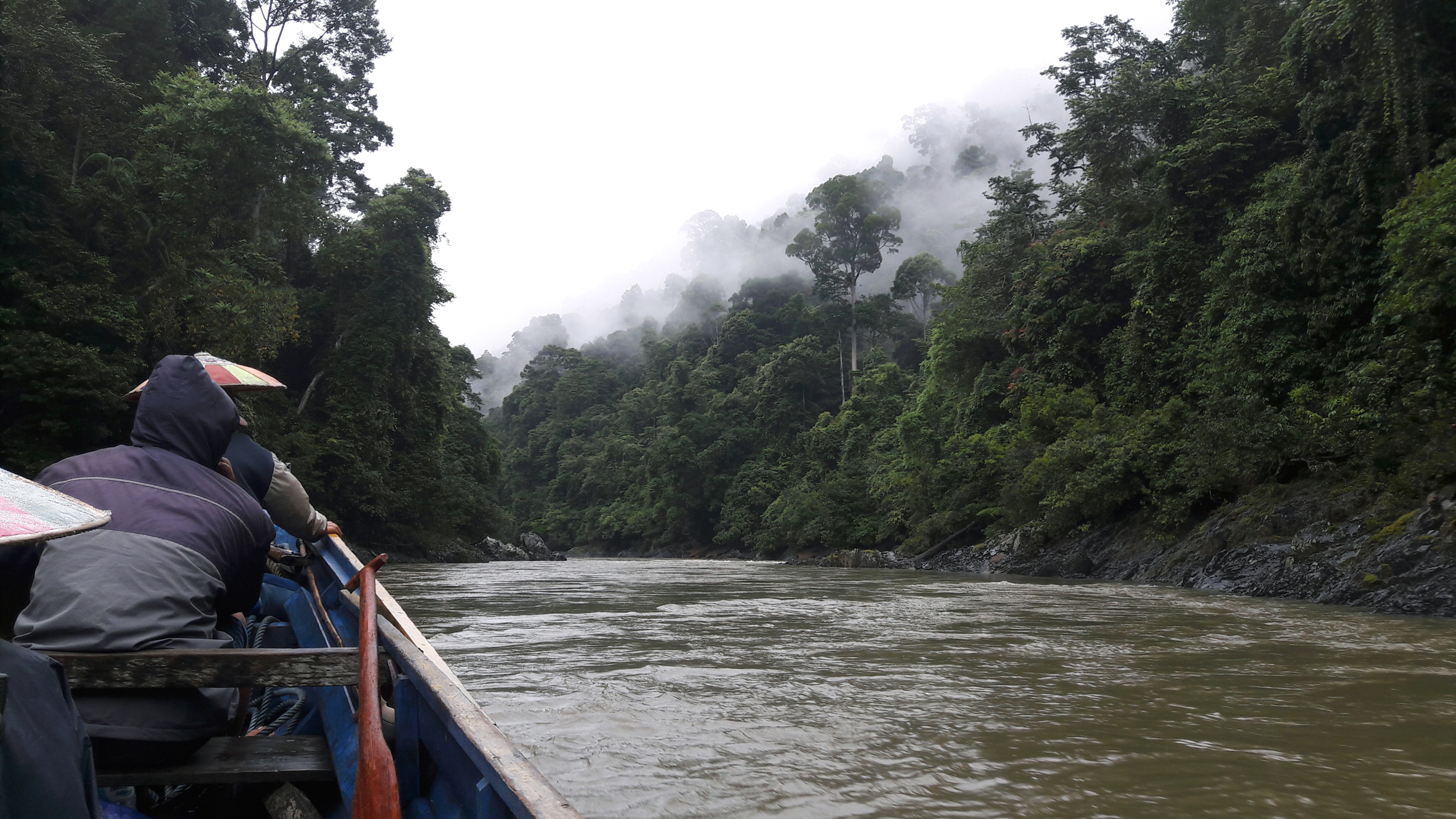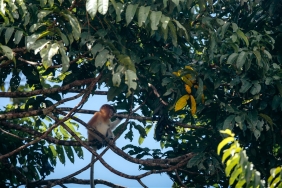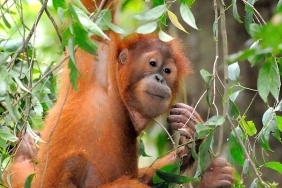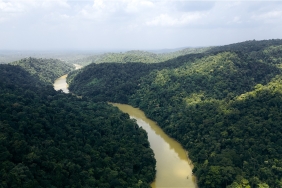A JOURNEY TO THE MAGNIFICENT NATURAL WONDERS
By: Anthonius
Field officer in Bulungan, North Kalimantan, WWF-Indonesia
Editor: Arum Kinasih
The tropical forest and its biodiversity which still maintained by the villagers around the forest and their local cultural wisdom become the main attraction for tourists, adventurers and researchers. Many people are competing to find something incredible to seek God’s creation up close and vying for more extreme activities. National parks, protected forests, or nature reserves are tourist destinations that could be an alternative reference to do various activities in the wild. One of the National Parks in the Heart of Borneo area is the Kayan Mentarang National Park, a landscape that lies from the Kayan River in the south to the Mentarang River in the north where most of the areas are in Malinau District, North Kalimantan.
Our journey started from Tanjung Selor using longboat as an alternative transportation to Bahau Hulu. We downed the Kayan River, Pujungan River and Bahau River and took 2 days trip. Since the condition of Bahau Hulu airport is not qualified and the flight schedule is uncertain, then water transportation has a very important role for the people there. Flying by airplane can only be sure if there is something urgency like taking sick people. In addition, long boats are also often used to transport various basic needs that were taken from Tanjung Selor and Tarakan City. Because of its very large capacity, a longboat can load around seven tons of goods for one trip and will cost Rp. 1,000,000 - Rp. 1,500,000 for a single trip to Long Alango.
Throughout the trip along the Kayan River, Pujungan River and Bahau River, many enchanting views arise from its natural landscape. Tropical forest cover, green hills and community villages along the Kayan River will fascinate the visitors. Every now and then, several eagles, storks and hornbills cross over us; not only that, some types of primates were seen jumping up and down between the trees. Indeed, it’s a splendid experience that we can’t get in a city.
Sometimes we had to cling to the edge of the boat as it passed a strong current that will make our adrenaline rush. If the river water was receding (tohor) then the current will be more visible. There were many strong currents and loads of rocks, thus made our longboat hard to pass it. In Baliu and Telasu 'dado' currents of Bahau river, we had to get off the boat and walked down the river while the goods loaded off half and brought up back through the strong current, then loaded it back again if the longboat successfully passed the current. It's a journey full of struggle and testing guts.
We arrived at Long Alango, the capital of Bahau Hulu District. WWF Indonesia Kayan Mentarang Landscape Project assists the community in village development planning through participatory mapping of village land use. In this activity, we invited officials and village communities to participate in short, middle and long-term village development planning. The information about the village, the annual village activity agenda and its potential will be summarized in documents that can be implemented by the villagers as a reference for the future village development. From this, we also tried to explore the potential of the village, including its tourism activities.
For example, in Long Alango, there is a customary forest or locally known as Tana’ Ulen Lalut Birai for the indigenous community Dayak Kenyah Leppo' Ma'ut. This forest is in the estuary of the Enggeng River. The existence of Tana' Ulen is so important for the people of Long Alango since the forest that lies between the border of Malinau in Indonesia and Sarawak in East Malaysia, containing more than 15,000 plants and half of them are not found elsewhere. The researchers also identified 310 bird species and of that number, 28 species are not found elsewhere and even endangered. In 1994, the Lalut Birai research station was established in Long Alango customary forest. Since then, Lalut Birai has become a natural laboratory and workplace for domestic researchers, foreigners, and even non-governmental organizations (NGOs) of nature conservation.
For tourist attraction, Kayan Mentarang National Park is also a unique area since we can also find the ancient burials such as stone burials, cliff burials, and carved rocks of the Dayak Kenyah ancestors. Katembu stone burial, is one of the historical attractions that located on Long Pulung and Long Berini. According to the local people, this ancient burial complex is the fifth site of the ancient site of Ngorek tribe. This indicates that since at least 400 years ago, the Dayak people have lived on this area. We could also see a waterfall in Apau Ping village. Walking to the north, there is a 200 hectares meadow where the habitat of the bull (Bos javanicus) or locally known as Kalasiau.
The establishment of Long Alango and Apau Ping villages as tourist villages has opened up opportunities for these two villages to develop the existing tourism potential to bring tourists and improve the welfare of the villagers. With the assistance from WWF-Indonesia, the community can further explore the village potentials such as nature tourism, cultural tourism, historical tourism, agro tourism and local wisdom for tourist attractions. In fact, the obstacles we face until now is the difficult access to reach the area, but by planning a village development and active participation from the local people and supported by the Government and NGOs, then improving the welfare of the local community can be achieved through existing tourisms.





